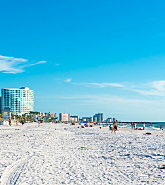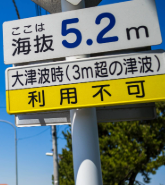Last week, as a participant on the Joint OECD/Geneva Association Roundtable on Climate Change and the Insurance Sector, I had the opportunity to outline the (re)insurance industry’s critical role in the financial management of climate catastrophe events.
Source: COP21 Make It Work/Sciences Po
The meeting, held in Paris during The 21st Conference of the Parties (COP21) to the United Nations Framework Convention on Climate Change, gave rise to a thought-provoking discussion of the many ways in which the insurance industry will need to engage with the challenges of climate change and in particular extend its “risk horizon.”
A next generation perspective of risk
For centuries we have considered that sea level or climate stays the same. But now we must prepare for a world of constant change. A good way to start is by developing dual horizons—today and a generation away—for how we think about risk.
Today the focus of the insurance industry is short-term. Most contracts are for a single year, securitizations might run for three years, but no-one is looking beyond five years–what at RMS we call the “Medium Term.”
But as our world continues to warm and the catastrophe risk landscape evolves, we need a “next generation perspective” of risk: an additional forward-looking perspective focused 15 -35 years in the future.
Today’s (re)insurers should expect to develop plans for how they would function in a world where there is an explicit cost of carbon and more intense catastrophes from droughts to floods. Everything we build today, from city center high rises to coastal infrastructure, will still exist but in a more extreme catastrophe event environment. Already the U.K. and French insurance regulators are starting to ask questions of their supervised firms as to how their businesses would function in such a future.
In this next-generation perspective insurers will have to play an increased societal role. Today, property owners assume that insurance will always be available. In our future world, that may become an unreasonable expectation. When determining where, and at what elevation, people can build in the flood plain, we should consider the risk over the whole future lifetime of the property, not simply the risk when the property is built.
This will require us to develop two defined datums: one for the current location of the 100-year flood zone, and a second “Next Generation” datum, showing where the 100 year flood hazard is expected to be 30+ years in the future. As highlighted by the December 2015 floods in Carlisle, northern England, flood protection already needs to consider how climate change is shifting the probabilities. When a building is constructed above the Next Generation flood datum a lifetime’s insurability may be guaranteed. These dual horizon datums will need to be objectively and independently defined, and insurers will want to be involved in determining what gets built and where.
The role of the catastrophe modelers
Since 2006, RMS has acknowledged it is no longer safe to assume that the activity of any catastrophe peril is best defined as the average of the past fifty or hundred years of history. What then becomes the basis for determining activities and severities? We have committed more than ten person years of research to exploring what gives us the best perspective on current activity, with a focus on Atlantic hurricane. However we will need to apply the same thinking to all the climate perils.
All states of the climate contain a wide spectrum of extremes. If the climate changes, we can expect the spectrum of extremes to change. In a climate hazard catastrophe model we want to know what is the best representation of that activity, including what is the uncertainty in that estimation.
Our value to our clients comes from our true independence. This value also extends beyond the insurance industry, to providing a neutral perspective on risk to rating agencies and governments. RMS models are used by both insurers and reinsurers. They are employed for issuing securitizations and for portfolio management by investors in cat bonds. In every risk transaction, the party taking the risk will be more pessimistic than the party giving up the risk. We have a key role to play in providing a neutral science-based perspective.






